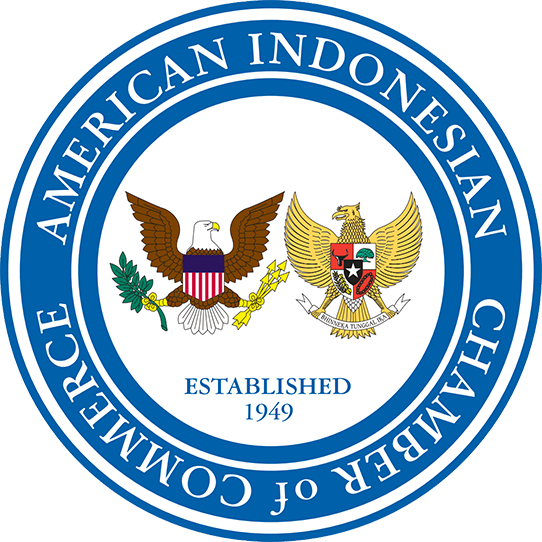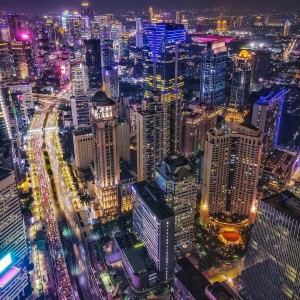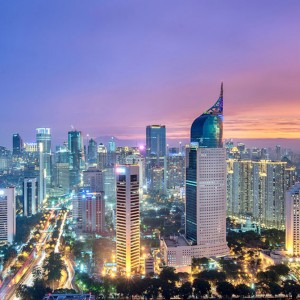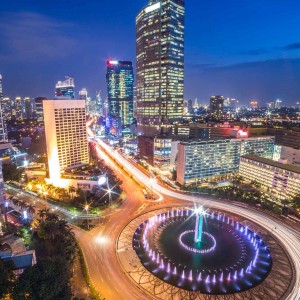| Commentary by Wayne Forrest |
| Remember those cartoons with song lyrics and a bouncing ball. The ball helped you match the words with the music. I wish I had a bouncing ball to follow the tariff issue and the visa issue, and I suspect many of you do too. So, here is my attempt, with some help from friends, to make sense of what may still be incomprehensible. The attempt to establish high tariffs and negotiate them down to achieve an advantage either at home and abroad for American companies has some logic but that logic breaks down when specific companies or classes of companies are reviewed. For example, there’s a whole class of importers who design products for the US market that are too expensive to be made in the US given our standard of living. Take for example, plastic cell phone holders. Most are made in China, India or Vietnam; some high-end models are made in the USA. Entrepreneur “X” gets a good idea for one and thinks they can sell them for $20 retail. The best price at a US factory might be $15 wholesale. “X” gets a $5 quote (including the tariff) from Shenzhen, a major Chinese factory hub. No brainer; “X” imports. Subtracting 10% profit (based on the retail price) $13 is spent in the US for services such as advertising, software, design, logistics/shipping, accounting, legal, and administration. All good paying US jobs. A 300% tariff would be needed to re-shore this work. It seems to me that unless Trump’s team gets very targeted with tariffs, few of them will bring back manufacturing and they could threaten livelihoods in the US. Similarly, Indonesia ships $billions of agricultural products to the US that we cannot grow (black pepper, cinnamon, coffee, tea, rubber, palm oil) due to our climate. These are usually not tariffed for the obvious reason they present no threat to US manufacturing. For each of these products the differential between the retail price and price at the port (customs, insurance, shipping) is substantial, supporting thousands of US jobs in all kinds of services. The Trump administration’s tariffs, at whatever level, would, according to AICC members I have polled, add anywhere from 2-10% on prices in the US market. This type of tariff makes no sense to me.
However, tariffs based on a reciprocal principle (we shouldn’t be tariffed more than we tariff you) could help US products enter foreign markets. Initially faced with 32% tariff on all goods Indonesia has already signaled to the US that it is willing to lower barriers to entry and absorb more US goods. Marc Mealy, Executive Vice President and Chief Policy Officer at the US-ASEAN Business Council (based in DC) kindly provided the following useful summary of the current situation:
The front-line meetings that occurred in DC at the end of April between Hartarto’s delegation and Howard Lutnick, Secretary of Commerce, Jamieson Greer, US Trade Representative, and Scott Bessent, Secretary of Treasury were cordial, but more substantive discussions are now occurring at technical levels. Nothing definitive has been reported as there is a non-disclosure agreement in place. Meanwhile, President Prabowo has directed his government to shift purchases of LNG, LPG, wheat, cotton, soybeans from other partners such as Canada and Australia to the US to absorb the $19 billion trade deficit. Furthermore, he announced that protective local content rules should be lowered, import licensing simplified or eliminated, and import taxes reduced. To further press Indonesia’s case a local Indonesian company Indorama announced a $2 billion investment to make blue ammonia in Louisiana, however the project has been in planning prior to Trump’s election and is an Indian-Indonesian venture. Although these may seem like concessions to the US tariff threat, John Goyer, Executive Director for Southeast Asia at the US Chamber of Commerce, made this perceptive comment to me, “The reforms Indonesia could make in response to U.S. complaints would be consistent with what it would already be obligated to do anyway in the context of its OECD accession effort.” In other words, what Indonesia has offered to the Trump administration are things it probably needs to do to make its economy more competitive”. In other words, what Indonesia has offered to the Trump administration are things it probably needs to do to make its economy more competitive, and is in the process of doing anyway. The 32% tariff initially announced on April 5 was quickly suspended for 90 days on April 9 and was reset to 10%. Theoretically by July 9 Indonesia and the US may come to a deal. What kind of deal it will be and how Indonesia benefits, remains a question some are asking in Indonesia. It could end up like UK’s deal which put the tariff at 10%. Already facing relatively high tariffs ranging from 10 to 37% and increased competition from Bangladesh and China, the Indonesia textile association, said the US tariffs (with the additional 10% raising rates as high as 47%) could lead to a 30% drop in demand for Indonesian textiles in the US market. The US is Indonesia largest garment export market. The association demanded Indonesia’s leaders negotiate to keep the US market open, and, ironically, it also argued that Indonesia’s should remain protected from “cheap goods” from its competitors, principally China. The chairwoman of Indonesia’s influential Indonesian Employers Association(APINDO), Shinta Widjaja Kamdani, kindly forwarded a slightly different and thoughtful perspective. She wants her government to make a deal soon to keep the US market open while realizing that regardless, Indonesia must continue with structural reforms. “We need to be confident that the Indonesian government can create a bilateral trade deal with the US soon: US tariffs must be lowered, and our respective businesses need certainty in bilateral trade relations. Nobody wins if the global trade landscape can flip-flop overnight. We are concerned that given the arbitrary nature of how it created the current tariff regime the US may not honor their end of the bilateral deal even if Indonesia buys more US products and reduces barriers to US goods. So, APINDO will continue to urge our government to focus on domestic deregulation and structural reforms at the same time it negotiates. With the US retreating from establishing a global trade order, trade will most likely be far less efficient and more vulnerable to abrupt disruptions. For Indonesia, we can expect trade will be driven by regional partners with which we already have functioning FTAs like ASEAN and RCEP countries.” For even more insight on where Indonesia is moving, we have President Prabowo’s remarks to a visiting Chinese delegation headed by Premier Li Qiang. With unambiguous but indirect references to his displeasure with the US, Prabowo said “The current international situation is chaotic, and the development of peace has faced many new uncertain and unstable factors. China and Indonesia are good neighbors and good partners.” He also praised China for its defense of anti-colonialism and anti-imperialism, its support for the Palestinian cause and “for standing up for the oppressed peoples of the world”. He clearly implied that the US, or at least the West, is imperialist and aggressive. Pretty extraordinary. The US will need to comes to terms with why Indonesia increasingly turns to China. In addition to the tariffs, cessation of USAID, existing threats to student visas and exchanges programs such as Fulbright, or possible changes to visitors’ visas communicates an unsettling message: US relations with Indonesia are adrift. Let’s hope the ball bounces back to normality. |
American Indonesian Chamber of Commerce

- HOME
- ABOUT AICC
- The History of AICC
- Major Initiatives
- Trade, Tourism, and Investment Program (TTI)
- Opportunity Indonesia
- Introducing Indonesia: Scholastic Ambassador Program
- Preventing A Lost Generation
- Comprehensive Indonesian-English Dictionary
- Sustain Sumatra
- 10 Year’s After: A nationwide public awareness program
- Support to Mandiri Craft
- Congressional Staff Visit
- Business and Cultural Programs in Dallas, Texas
- US-Indonesia Women’s CEO Summit
- Topeng Sehat: AICC Initiative Against COVID-19
- 2021 Shipping NYC Surplus PPE To Indonesia
- Board of Directors
- Membership Benefits
- FAQ
- Membership Registration and Forms
- EVENTS
- LINKS
- TRADE LEADS
- LATEST NEWS/COMMENTARY
- DOING BUSINESSS
- COUNTRY DATA
- BLOG POSTS





AMERICAN INDONESIAN CHAMBER OF COMMERCE




